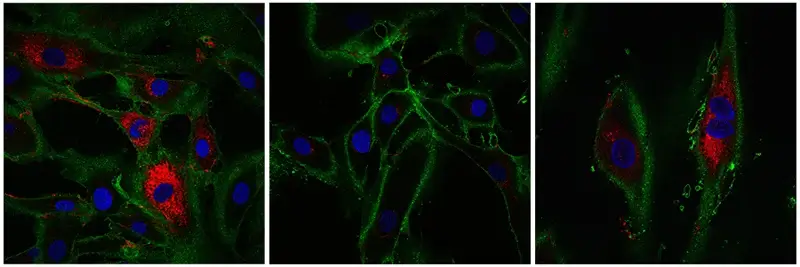
Scientists Rewind The Clock of Human Skin Cells To Make Them Act 30 Years Younger
Biological time travel.
By David Nield | Science Alert
It’s not quite the mythical fountain of youth but it is, perhaps, a start: Scientists have managed to engineer human skin cells to reverse 30 years of aging, resetting them to a much more youthful state in terms of certain molecular measurements.
While it’s very early days for the research – so we shouldn’t get carried away too quickly – the technique could play a major part in efforts to produce rejuvenative medicine that’s able to undo some of the damaging consequences of our bodies getting older.
What makes the research particularly notable is that the skin cells were reprogrammed to be biologically younger while still keeping some of the functionality that made them skin cells in the first place.

The process used here builds on the Nobel Prize-winning work of Shinya Yamanaka in 2007, where Yamanaka was able to turn normal cells with a specific function into stem cells that can develop into any type. This meant, however, that the cell would lose its specific identity.
“Our understanding of aging on a molecular level has progressed over the last decade, giving rise to techniques that allow researchers to measure age-related biological changes in human cells,” says biologist Diljeet Gill from the Babraham Institute in the UK and the study’s lead author.
“We were able to apply this to our experiment to determine the extent of reprogramming our new method achieved.”
The new method, dubbed ‘maturation phase transient reprogramming’, works more quickly (13 days, compared to 50 in the Yamanaka team’s experiments) and stops before the stem cell state is reached, allowing the cell to retain its original identity and function.
A variety of measures, including the epigenetic clock (chemical tags that indicate age) and the transcriptome (gene readings produced by cells), were used to confirm that the skin cells had indeed been rolled back in biological age by three decades.
Collagen production is a key function of skin cells – useful for structuring tissue and healing wounds – and the youthful cells were observed to be still pumping the stuff out. In fact, they were producing more collagen than control skin cells that hadn’t undergone the reprogramming process, and showed signs of being able to heal wounds more quickly.
“We have proved that cells can be rejuvenated without losing their function and that rejuvenation looks to restore some function to old cells,” says Gill.
“The fact that we also saw a reverse of aging indicators in genes associated with diseases is particularly promising for the future of this work.”
As of yet, the scientists don’t fully understand how the mechanism behind maturation phase transient reprogramming works, but they think that certain key parts of the genome, which help controls cell identity, might be able to escape the reprogramming.
There are a huge number of age-related health issues to tackle as we get older – from heart disease to Alzheimer’s – and further in the future, the research that’s been outlined here could be useful in finding ways to tackle the progression of these issues.
One of the next steps will be to try and apply the techniques used here to other types of cells in the body, and to make sure the processes are completely safe before moving them out of the lab and into clinical trials.
“Eventually, we may be able to identify genes that rejuvenate without reprogramming, and specifically target those to reduce the effects of aging,” says molecular biologist Wolf Reik from the Babraham Institute.
“This approach holds promise for valuable discoveries that could open up an amazing therapeutic horizon.”
The research has been published in eLife.
This article was originally published by Science Alert.
